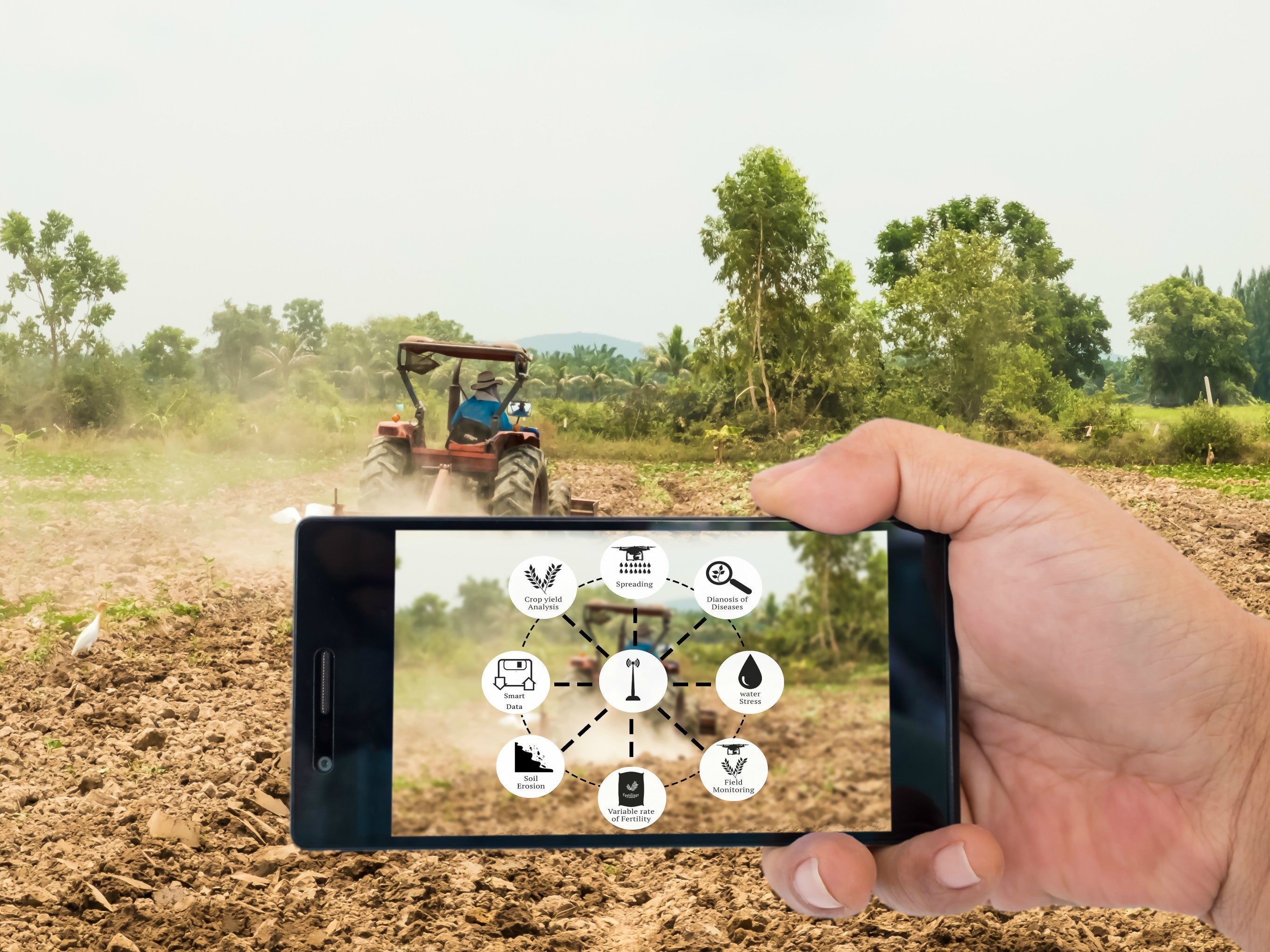The Future of Agriculture:
Challenges and Opportunities for Precision Agriculture on Medium- and Small-Scale Farms
Precision agriculture (or PA) is the next wave of agricultural innovation. While innovations from the 19th and 20th centuries embodied scientific knowledge in the form of inputs or devices that could be easily used by producers, PA is based on electronic information and communications technology. The impacts of PA technology on the size and organization of agriculture are just starting to be felt.
In spite of population growth, many regions are facing farm labor shortages. Young people are seeking opportunities in the cities rather than in rural areas. The conventional solutions to the lack of workers is motorized mechanization, broadcast herbicides for weed control, and blanket pesticide application for insect and plant disease management. Unfortunately, these solutions often require a radical reorganization of medium and small-scale farms. Trees must be cut, rocks removed, villages relocated, and streams rerouted. Moreover, a broadcast application of pesticides can make the countryside a less desirable place to live. PA technology offers more sustainable and effective alternatives. For example, robotic equipment can farm efficiently around trees, rocks, and villages, while microdosing fertilizer and pesticides can reduce environmental impact. Online and mobile ordering of agricultural inputs with drone delivery can help medium and small-scale farmers use the right inputs at the right time. Drone spot spraying, optimal weed sensing, and robotic microdosing of pesticides have the potential to drastically reduce agricultural chemical use and change the economies of scale in weed and pest control. Electronic marketing via the internet and cell phones can help these farmers sell higher valued products directly to processors and consumers.
Adoption of PA Technology
Across the world, the large-scale mechanized agriculture sector is adopting PA technology that does not require specialized knowledge by the user. For example, many countries are using GPS-based applications for guidance of agricultural equipment. In the United States, over 85 percent of agricultural chemical dealers use GPS guidance to apply fertilizer and pesticides, and farmers in the country are following a similar trajectory. In Australia, over 80 percent of grain farmers use GPS guidance. Worldwide, many new tractors, sprayers, and harvesters are equipped with GPS autosteer, allowing “hands-free” farming. With this technology in place, the operator’s role is mainly to hit the off switch if something goes wrong. To cut costs and improve control of farming practices and input application, a logical step forward is autonomous robotic equipment.
The adoption of PA technology that requires specialized knowledge by the user has been more limited. For instance, in the United States about 80 percent of fertilizer dealers offer variable-rate technology (VRT) application services, but farmer surveys suggest that no more than 20 percent of farms or crop areas actually use the technology. Data from Europe, Latin America, and the former Soviet Union suggest similar levels of adoption. Hypotheses about these relatively modest levels include the following:
- High cost of manual soil testing and lab analysis
- Lack of confidence in fertilizer recommendations or algorithms (especially for nitrogen)
- Low cost of fertilizer without considering the environmental impacts or other externalities
Economists suggest that widespread adoption of VRT fertilizer (and other inputs) will probably require additional technology. Specifically, it will require the development of on-the-go sensors coupled with robust algorithms that adjust input rates as the equipment moves through the field. On-the-go soil sensing and fertilizer rate adjustment would make VRT fertilizer an embodied knowledge technology eliminating costly and error-prone human intervention.
Seizing the Opportunity
However, farms around the world are adopting PA technologies. A key question is: who will benefit? For the benefits to reach small and medium-scale farmers, countries will likely need to increase investment in research and development (R&D) that adapts PA technology. On a local level, this might require further R&D funded with public investment, since agricultural innovation on medium- and small-scale farms has a strong public good aspect. Public interest in rebuilding rural economies and reducing the environmental impact of agricultural chemicals justifies the allocation of funds. That adaptive R&D is needed to attract entrepreneurs to the sector who will eventually build the supply chains that make this technology sustainable.
Photo: (c) Shutterstock


Leave a Reply